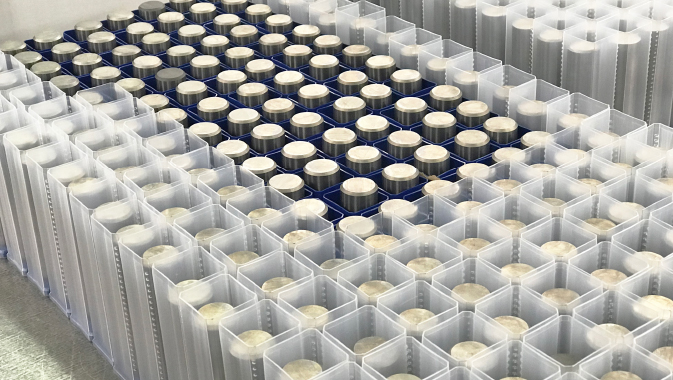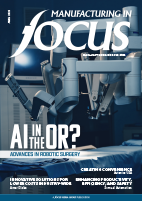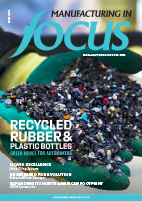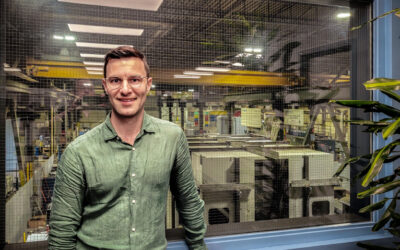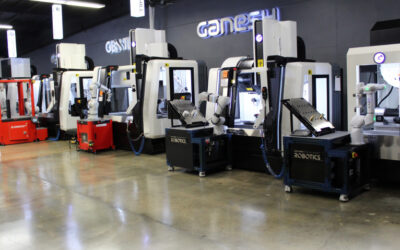Hydro Carbide Tool Company specializes in custom products made from Tungsten Carbide as well as some standard products to supplement custom products including tooling blanks, wear parts, and preforms. Its expertise lies in manufacturing these products to near net shape to ensure that its customers are able to save on time and resources when finishing the products for specific applications.
~
Tungsten Carbide is an extremely hard and wear resistant material that takes a long time to finish, and can only be worked with diamond tools. For this reason, Hydro Carbide invests extra effort to make their products as close to the final shape as possible, resulting in reduction in finishing operation time and resources – a great benefit for its customers.
Tungsten Carbide is produced from Tungsten Carbide, Cobalt and other additive powders milled and pressed together. In this this pre-sintered state, also called the “green” state, the material is extremely delicate and great care is required to machine it properly. Hydro Carbide’s specialty lies in complex process of shaping Tungsten Carbide in its softly pressed, green state.
“We are known for manufacturing intricate products, all pre-formed in a green state, which is the un-sintered stage of manufacturing Tungsten Carbide. Machining these powder compacts is more of an art than science and our skilled veteran workforce are artists,” says Parag Bedekar, President of Hydro Carbide Tool Company. There are no standard products – each product manufactured by Hydro Carbide is a custom product made to the customer’s specifications. Even standard products like Tungsten Carbide rods have customer-specific requirements.
Time is paramount in the manufacturing industry; for most clients, when a tool is needed, it’s needed soon, and Hydro Carbide prides itself on punctuality. Projects begin their manufacturing process on the same day the order is received and are completed within two to three weeks. The company also has a reputation for its flexibility with customers and has been known to expedite to only one week for urgent situations.
Hydro Carbide was originally founded by three owners in 1964 and since that time it has undergone four ownership changes. The company reached significant success in the late 1990’s and early 2000’s and the name Hydro Carbide became synonymous with innovation in the preform industry. “Many of our grade compositions are widely used throughout the world and even listed in many text books. We were especially known in area of sub-micron Tungsten Carbide grades, which was a new development just emerging in the 80’s and now is the most preferred grade composition for end mills all over the world,” says Parag.
Unfortunately, the financial downturn of 2008-09 took a devastating toll on the company. When doors were opened to more foreign competition, customers were compelled to purchase less expensive, overseas products, in many cases with lower performance, that American manufacturers could not compete with. Hydro Carbide was forced to close its plant in Gulfport, MS as competition with low cost traders was not a possibility and its second plant in Latrobe, PA, had to downsize. The facility was left with no leadership in-house and it was being managed remotely, which led to its closure in October of 2016.
It was at this time that Parag acquired the company’s assets and rebranded it as Hydro Carbide Tool Company. He decided to keep the original name to build on the existing reputation of quality, adding ‘Tool Company’ to differentiate it from the original company for legal reasons, but also to mark the restructuring that was about to take place. Hydro Carbide then adapted a lean manufacturing company model and rehired approximately 75 percent of its original workforce.
Late in 2016, the company resurfaced with 29 employees and today it has grown to 43 skilled individuals. “As I transformed the company into a lean enterprise, my motto has been the development of a competitive multi-tasking workforce. Our staff wear multiple hats. For example, our IT manager also manages finished goods stock, our materials manager also looks after HR duties, and our accountant also handles shipping,” says Parag, who himself enjoys stepping outside of his management role and getting hands-on experience with the customers by preparing project quotations and providing input with other day to day operations.
“I have worked as a stand-in sales manager, stand-in metallurgist and stand-in accountant; I try to fill in wherever I can,” he shares. “My first job is manager, but as an engineer, I like to get my hands dirty.” The concept of training the staff to take on multiple positions is a useful strategy for a small company that may not require or be able to afford one person for each task. This also requires efficient systems to avoid overburdening of employees.
On the production floor, as well, the majority of the operators are trained to operate a number of different machines, and are expected to multitask. Their wages now depend on their ability to perform multiple tasks and Hydro Carbide has put incentives in place to encourage them to pursue new goals within the company. This has created an exceptional work environment that is more competitive and productive, because the employees increasingly want to learn the operation of more equipment to further their careers.
In the last two years, Hydro Carbide has increased only 20 percent in its workforce, and yet its revenue has more than doubled. It is clear from the numbers that the lean manufacturing business model, paired with a motivated and empowered workforce, has made a remarkable difference.
There were many challenges that came along with the restructuring of the company. As an asset acquisition, it could have started with totally new employees, but that would have been a waste of experienced and skilled labor, and the new owner wanted to honor the previous company’s foundation. One hurdle to changing the old ways of the company was the union’s traditional type of contract with specific job classifications, which did not promote multitasking. The new ownership renegotiated together with the union to demolish those barriers and allow operators to specialize in multiple areas.
Located in the relatively small, low-key town of Latrobe, Pennsylvania, Hydro Carbide is proud to serve its community by providing great workforce opportunities at a time when a number of other companies are moving out, closing down, or downsizing in the area. Hydro Carbide is continually hiring to supply its continued growth and is looking for quality employees seeking a long-term career.
Tungsten Carbide is used in many industries, and Hydro Carbide is diversified in the number of markets it serves, including aerospace, automotive, oil and gas, construction, mining, food, medical, agriculture, and defense. Parag has learned through experience that specializing in one industry can be detrimental, especially if that market experiences sudden change. Hydro Carbide is comfortable with its current growth trajectory, because it is well positioned in a few strong markets, as well as with several smaller, niche ones.
“The Hydro Carbide brand name was known to the market, but it was long lost. We are being re-recognized and our past customer base is returning to us because of cost competitiveness, quick delivery time and great customer care,” says Parag. Hydro Carbide is developing new customer relationships in both the domestic and international markets and several of the company’s Tungsten Carbide grades have been approved by prestigious companies to do business with, such as GE and Pratt & Whitney.
Hydro Carbide Tool Company proudly calls itself a ‘Made in the USA’ company; all of its products are manufactured onsite in Latrobe, PA. It takes part in international business and global procurement of raw materials, however it strives to remain independent of the dominating Chinese market. The main two raw materials of Tungsten Carbide compositions are Tungsten Carbide and Cobalt, both of which are heavily controlled by China. The majority of the world’s Tungsten resources are located in mines in China and the county also controls over 70 percent of the global supply of Cobalt.
Two years in, and the renovated Hydro Carbide is on path of solid growth. It has plans to update some of its production equipment in the near future and it is also engaged in mutual research and development with other companies for truly innovative products that the industry has never seen before. It is currently working on developing a material that is similar to diamond in hardness, but comes at a fraction of the cost, ensuring cost effectiveness for customers.
“This is a classic turnaround story of a company which had a bright past but saw no future. This is also a story of small business entrepreneurship saving American jobs and standing up against low cost trade war. We can win this only with innovation and technology,” says Parag.

